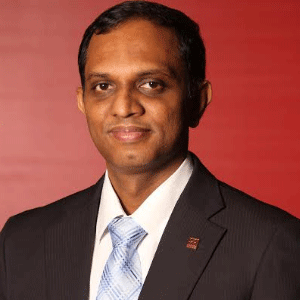THANK YOU FOR SUBSCRIBING

Dmitry Firskin, Chief Investment Officer at AltaIR Capital
Every investor knows the calculus: early-stage investments are inherently risky but carry the potential for huge margins down the road. The real question is how to assemble a portfolio that minimizes the risk while maximizing the margins. In this article, AltaIR Capital founder and managing partner Igor Ryabenkiy shares his principles for creating a balanced investment portfolio and explains how many and which types of projects you should choose, how to manage them, and how to know when it’s time to hand over control.
Understanding and ownership
The basic rule is this: an investor must be able to explain in simple terms a project’s purpose and long-term goals, and why it is worth supporting. For this reason, investors should select projects within their area of expertise, choose industries they understand, maintain a geographic focus, and assess the market’s prospects.
Our company’s strategy is to invest at an early stage in projects in the productivity tools, future of work, digital health, and fintech segments. We primarily invest in startups based in the U.S., Israel, and Europe. This may or may not match your current interests. Remember that investing is not only about making money. It’s also about following your passion. There are lots of cool industries to make money in, but if they don’t inspire you, you’re better off passing them by.
Project selection: the litmus test and personal affinity
Apart from the obvious need to choose projects based on your expertise and skills, you should also pay attention to the following:
Openness to the market. Founders should approach an investor directly and not through intermediaries. This shows that they are not trying to ride someone else’s coattails, can handle stiff competition, and are prepared to convince anyone and everyone of their project’s worth based strictly on its own merits.
Passion for the idea. If the founder isn’t on fire with his project, he won’t be able to generate enthusiasm in others—or in the market. His job is to single-mindedly pursue his chosen idea until it triumphs. If, instead, he pitches 10 different ideas in hopes one catches your interest, he’s behaving more like a wannabe investor than a highly-motivated founder. If that happens, you can confidently show him the door.
An understanding of the stages of business development. The startup team must come to you with a fully-formulated business idea, an understanding of which resources it needs, and calculations showing how it will generate significant revenue and when. Having a clear plan is a kind of litmus test.
The founder’s character. As an investor, you should feel some personal affinity for the startup’s founder. No matter how brilliant the idea is, you are better off not investing in a project if the founder behaves inappropriately, tries to play one investment fund off another, or confuses personal well-being with the health of the project itself. It’s important that you’re both on the same page and have common interests. For the same reason, you should be wary of startups run by close relatives or friends. If he needs to, he can always fire an employee or break up with a business partner, but when that person is his/her father; wife, brother, or good friend, serious problems arise. One of two things will inevitably happen: familial considerations will outweigh the needs of the business or else relatives (or close friends) will become estranged. Either way, the founders will become so stressed that they will gradually lose interest in the business.
Of rigour and rules
It usually takes a private investor several years to put together a complete portfolio. It all depends on your preferences, financial means, and investment plan. For example, you could invest half a million every six months or sink $50,000 into a project every month.
A private investor should be prudent and never impulsive. We recommend that you draw up your own list of rules. You might decide to invest the same amount in every project. Or you might opt to rank them according to the development stage and risk involved, investing less—say, $25,000—in risky, early-stage projects and more—say, $50,000-$100,00—in projects that are already growing. Stick unbendingly to whatever rules you have chosen and you will soon begin to observe certain patterns—and avoid costly blunders.
Our company’s strategy is to invest at an early stage in projects in the productivity tools, future of work, digital health, and fintech segments
When assembling your portfolio, also consider the possibility of making additional investments in projects that demonstrate rapid growth. For example, in one rapidly-growing project, we have made several follow-on investments totalling $10 million. And this is not an isolated event. If a business is going strong, we will invest in it. But you need to plan for this eventuality and have the necessary reserves in place.
Balancing and management
Venture capital investment is like a game of strategy that offers great returns. If you invest in just one or two projects, though, the chances are low, you will hit the jackpot with either one. But if you have a portfolio of 10 projects, your chances improve considerably. Some can be early-stage, others late-stage. Also, an investor’s available capital and personal characteristics determine how much risk he or she is willing to assume. Remember: invest smaller amounts in the early stages when the risk is higher, and larger sums in the later stages when the risk is lower. Achieving the proper balance is the key to success.
It is one thing to assemble a strong portfolio and quite another to manage it properly. That task is more like a game of chess. You need to constantly review your projects, know what is happening with each and be able to recognize the pitfalls that often arise in subsequent rounds. An investor with 10, 15, or 20 projects is like a chess master playing simultaneously on the same number of chessboards. Assembling and managing such a portfolio singlehandedly is very difficult, especially without industry experience. For this reason, you need to first graduate from “the school of hard knocks” and build up your team to minimize risk, or else look over the shoulder of an experienced player— such as an investment fund that does most of the heavy lifting for you. Sometimes venture funds also manage small angel club around them.
Keeping a hand in multiple startups
There are two, fundamentally different methods: the entrepreneurial and the venture capital approach. Unlike entrepreneurial investing—where the investor holds a majority stake and maintains tight control with the help of dutiful managers—a venture capital investor joins some else’s growing project. He can ask plenty of questions to know exactly what’s happening, but he should not interfere.
Some investors believe that even a share of 2% or less gives them the right to control a company’s processes and make adjustments to its strategy. However, no startup team is obligated to even respond to communications from such investors, much less take their advice.
However, holding a share of 10% or more can pose a serious burden for an investor. After all, he or she will get a seat on the board of directors, have to attend regular meetings, consult on decisions, and reach a consensus on various memorandums. Also, when the project is complex and requires money, major investors must step forward to fill the monetary gaps. Now imagine a portfolio of 20 such projects and you’ll see why not everyone would want such a lifestyle. The only option, in this case, is to rely on the work of a professional team.
An investor’s best strategy is to give the founder the freedom to develop his business. Every hour that he works on his project means much more growth. But if he’s forced instead to devote his time to endless meetings with investors and business angels eager to give him advice, his business will stagnate and their investments won’t grow. If you want to help a team that needs expertise, you can hire on as an advisor, but not as an investor. Or else you can join the board of directors. If the startup team doesn’t want you as an advisor, then step aside and let them do their job. The role of a venture investor is not to maintain a constant dialogue with the team, but to provide or withhold funding as needed—and to know when it’s time to sell your share.













